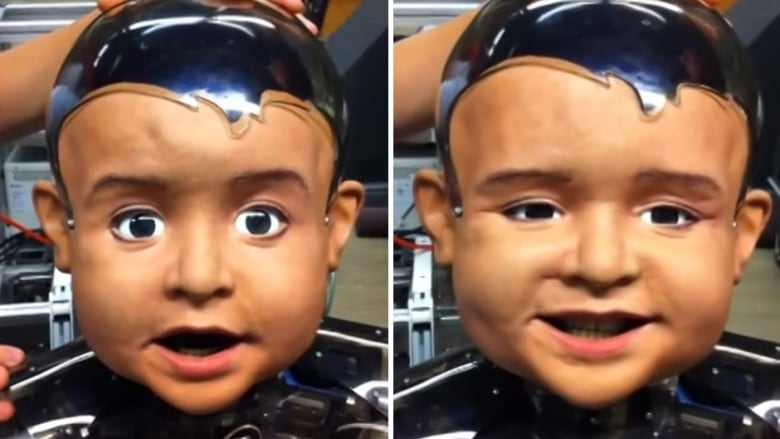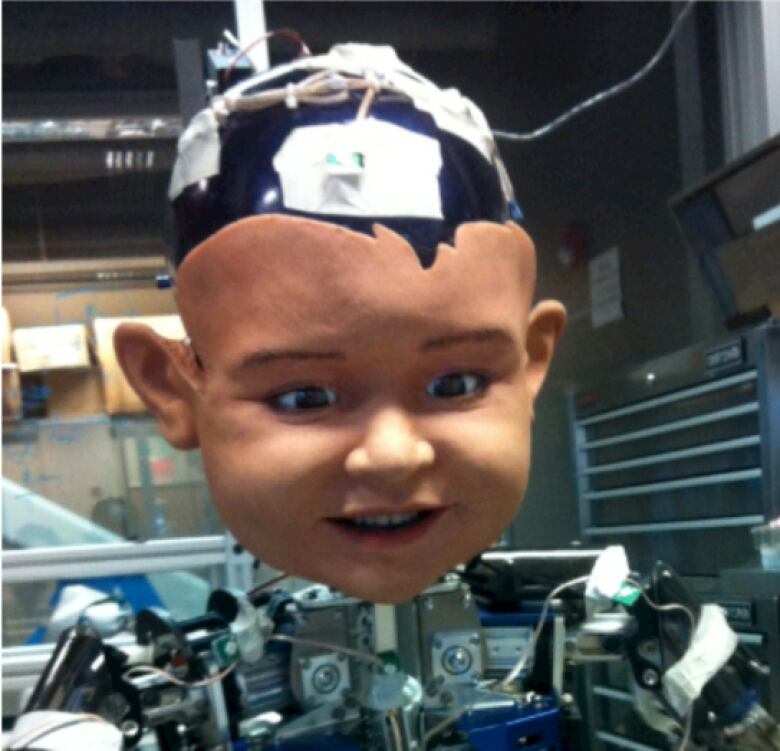Creepy robot shows that babies try to make their mothers smile
The robot was used to prove that babies engage in 'smile games'

Scientists have taken the positionin a new study that one of the reasons babiessmileis to get mom or any other caregiver to smile back at them. To demonstrate that, they used an uncanny robot baby.
Researchers from University of California, San Diego, published a paper Wednesday that argues that babies don't simply mirror their mothers when they smile. To study this, they used Diego-san, a robot baby.
The paper, published in PLOSOne,says that babies and their mothers engage in "smile games" where they each try to make the other smile. Essentially, caregiverswant to smile with their babies, but that isn't necessarily the goal of the children. The babies, it turns out,smilejust enough to make the caregiver smile.
"What makes our study unique is that previous approaches to studying infant-parent interaction essentially describe patterns," one of the co-authors, Dan Messinger, told the International Business Times. "Here, we find that infants have their own goals in the interaction, even before four months of age."
This new work builds on an earlier study which looked at 13 pairs of mother and child pairs, and in 11 of those pairs, the babies appeared to smile before the mother.
Messinger, and his co-authors Javier Movellan and Paul Ruvolo, needed to further test these results and so used Diego-san a robotwhich attempts to portray the expressions of a one-year-old child.
The toddler-bot was then partnered with university students who acted as its caregiver. The caretakers liked it when they and the robot baby were both smiling, whilethe robot was able to read the caregiver's expression so it would smile at the right time and just enough to get the caregiver to smile.
"If you've ever interacted with babies, you suspect that they're up to something when they're smiling. They're not just smiling randomly," Movellan said to the International Business Times.
Diego's face was built by Hanson Robotics, with 27 moving parts. Meanwhile, its software aims toteach the robot how to move and communicate like a one-year-old child.
Movellan and his team in the Machine Perception Laboratory designed the software.
"Its main goal is to try and understand the development of sensory motor intelligence from a computational point of view," Movellan told PlasticPals, a Japan-based blog, in 2010.

Regardless of its usefulness, people have remarked that the toddler-like robotlooks realistic but unnerving, with limbs moving in odd directions.
"It's bad enough that this thing moves like a stop-motion robot monster from an old horror flick, but its face is all busted, like a baby everyone thought was real until it started peeling off its fake skin, revealing its mechanical chassis, and killing everyone," wrote Jordan Pearson for Motherboard.
If all goes according to plan, this won't be the last time Diego-san pops up in cognitive research. Mollevan's team designed it to be tool to study thecognitive development of infants.
"Basically we are trying to understand the computational problems that a baby's brain faces when learning to move its own body and use it to interact with the physical and social worlds," Mollevan told Gizmag in 2013.












_(720p).jpg)


 OFFICIAL HD MUSIC VIDEO.jpg)
.jpg)



























































































